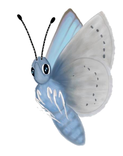
Did you know there was a phenomenon referred to as summer-learning-loss? During their summer break, kids seem to forget lessons they had learned during the prior school year. On average, student achievement scores decline by one month’s worth of learning. The sharpest declines are in math and spelling, and the extent of loss increases as the grade levels advance.
A 2008-2012 summer-learning-loss study using data from over a half-million students from second to ninth grade discovered that students lost 25 to 30 percent of what they learned during the school year over their summer holiday.
Why? Summer vacation breaks the rhythm of instruction and leads to forgetting. So, when it’s time to reengage in the daily grind of reading, writing, and arithmetic, it requires a significant amount of review to get students up to par before tackling new material.
How Do We Fix It? This has been an ongoing dilemma researchers and educators have been studying since 1909, and a multitude of suggestions have been introduced to combat the problem. Yet, basically, it all boils down to keeping our children’s young minds stimulated with exciting and fun summertime endeavors that’ll motivate their little gray cells to continue soaking up knowledge during their time away from formal learning.
How Do We Get Kids Enthused About Studying During Their Holiday? When I was a kid, the last thing I wanted to think about during the summer was doing schoolwork. I’m sure that hasn’t changed! The secret is to suggest activities which promote thinking, reading, and learning in a nontraditional way, so the kids associate it with summer fun instead of its being educational.
Being a pollinator enthusiast, I naturally gravitate towards activities like the Xerces Society’s X Kids Program. It’s a super cool way to get kids outside to explore their own backyards and discover all the creatures living just beyond their doorstep.
The X Kids Program is led by a butterfly named Blue. Children aged 8-11 learn all about bugs – a subject most kids find fascinating! Using a downloadable book, the children complete projects and receive a badge when all the activities are completed.
Along the same lines are citizen science projects that combine a little bit of science with a little bit of observation, and a whole lot of fun for the entire family. Many of the projects are simple, yet the activities stimulate those gray cells to absorb all kinds of new information. How about taking 10-15 minutes in the evenings to count fireflies? https://scistarter.org/firefly-watch. If you’re more into counting squirrels, try https://scistarter.org/project-squirrel.
Do you like picnics? So do ants. With https://scistarter.org/ant-picnic, you and your child prepare six types of food you think ants might like, wait an hour, and then record the number of ants attending your picnic.
There are also more complicated projects, such as NASA’s Globe Observer: Clouds for middle grade and high school students. On https://scistarter.org/, you can find citizen science projects for all ages and interests, ranging from archeology to zoology.
If you and your child aren’t interested in citizen science, here are some other games and activities that’ll keep young/middle-grade/teenaged minds active:
It doesn’t have to be anything complicated or time-consuming as long as it stimulates those little gray cells to think, make decisions, and learn.
How are you and your family going to spend your summer vacation?
Be sure to subscribe to the Sweet & Sassy blog, so you never miss out on any of our posts!
A 2008-2012 summer-learning-loss study using data from over a half-million students from second to ninth grade discovered that students lost 25 to 30 percent of what they learned during the school year over their summer holiday.
Why? Summer vacation breaks the rhythm of instruction and leads to forgetting. So, when it’s time to reengage in the daily grind of reading, writing, and arithmetic, it requires a significant amount of review to get students up to par before tackling new material.
How Do We Fix It? This has been an ongoing dilemma researchers and educators have been studying since 1909, and a multitude of suggestions have been introduced to combat the problem. Yet, basically, it all boils down to keeping our children’s young minds stimulated with exciting and fun summertime endeavors that’ll motivate their little gray cells to continue soaking up knowledge during their time away from formal learning.
How Do We Get Kids Enthused About Studying During Their Holiday? When I was a kid, the last thing I wanted to think about during the summer was doing schoolwork. I’m sure that hasn’t changed! The secret is to suggest activities which promote thinking, reading, and learning in a nontraditional way, so the kids associate it with summer fun instead of its being educational.
Being a pollinator enthusiast, I naturally gravitate towards activities like the Xerces Society’s X Kids Program. It’s a super cool way to get kids outside to explore their own backyards and discover all the creatures living just beyond their doorstep.
The X Kids Program is led by a butterfly named Blue. Children aged 8-11 learn all about bugs – a subject most kids find fascinating! Using a downloadable book, the children complete projects and receive a badge when all the activities are completed.
Along the same lines are citizen science projects that combine a little bit of science with a little bit of observation, and a whole lot of fun for the entire family. Many of the projects are simple, yet the activities stimulate those gray cells to absorb all kinds of new information. How about taking 10-15 minutes in the evenings to count fireflies? https://scistarter.org/firefly-watch. If you’re more into counting squirrels, try https://scistarter.org/project-squirrel.
Do you like picnics? So do ants. With https://scistarter.org/ant-picnic, you and your child prepare six types of food you think ants might like, wait an hour, and then record the number of ants attending your picnic.
There are also more complicated projects, such as NASA’s Globe Observer: Clouds for middle grade and high school students. On https://scistarter.org/, you can find citizen science projects for all ages and interests, ranging from archeology to zoology.
If you and your child aren’t interested in citizen science, here are some other games and activities that’ll keep young/middle-grade/teenaged minds active:
- Baking or cooking
- Acting out a story or playing charades
- Growing vegetables or flowers
- Looking at and identifying stars
- Jigsaw puzzles
- Playing I spy
- Making up a secret code and writing messages
- Creating a new superhero
- Keeping a diary or journal
- And of course, Reading!
It doesn’t have to be anything complicated or time-consuming as long as it stimulates those little gray cells to think, make decisions, and learn.
How are you and your family going to spend your summer vacation?
Be sure to subscribe to the Sweet & Sassy blog, so you never miss out on any of our posts!









 RSS Feed
RSS Feed